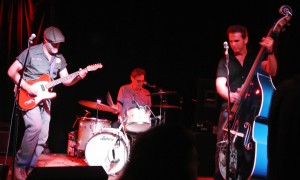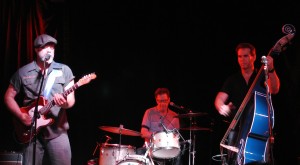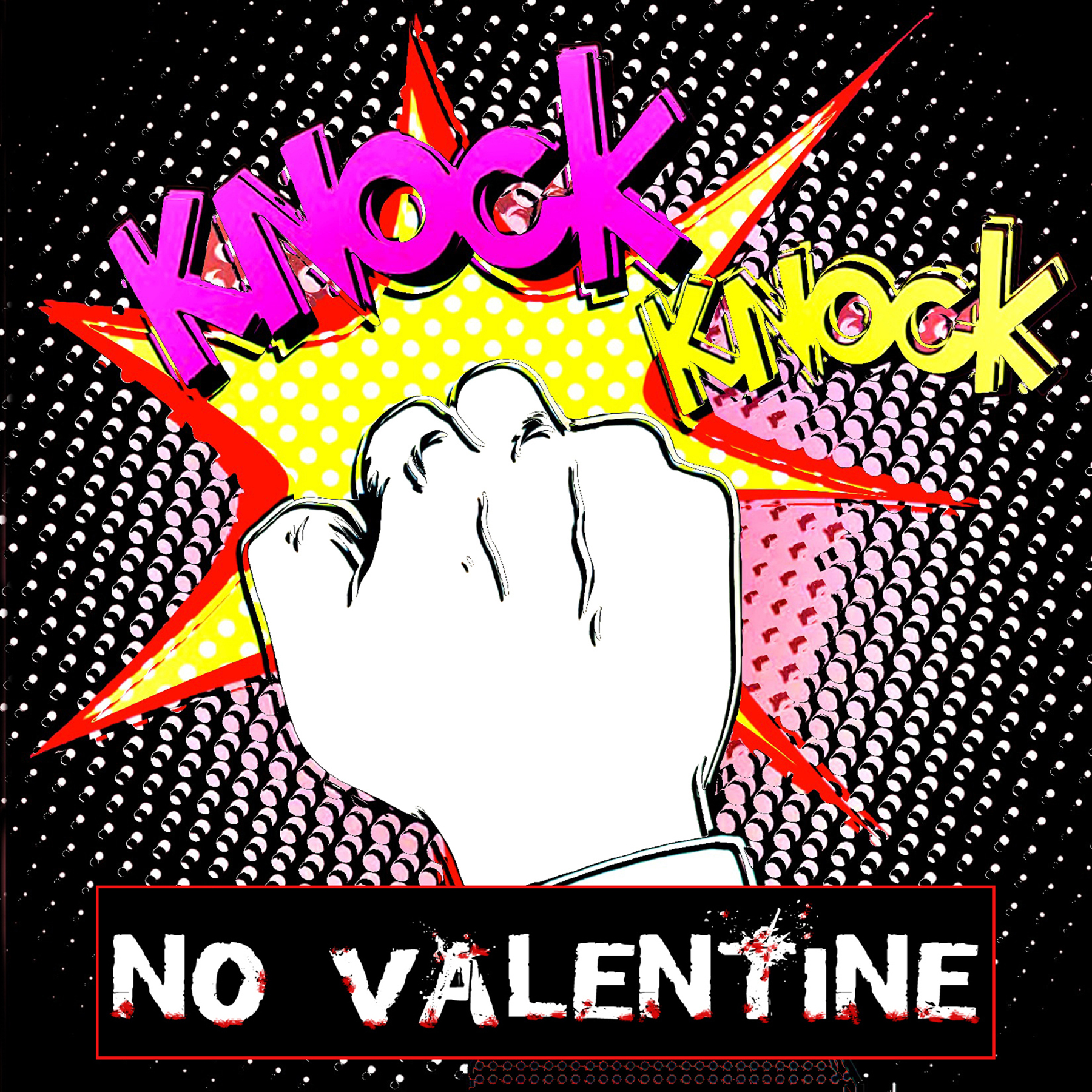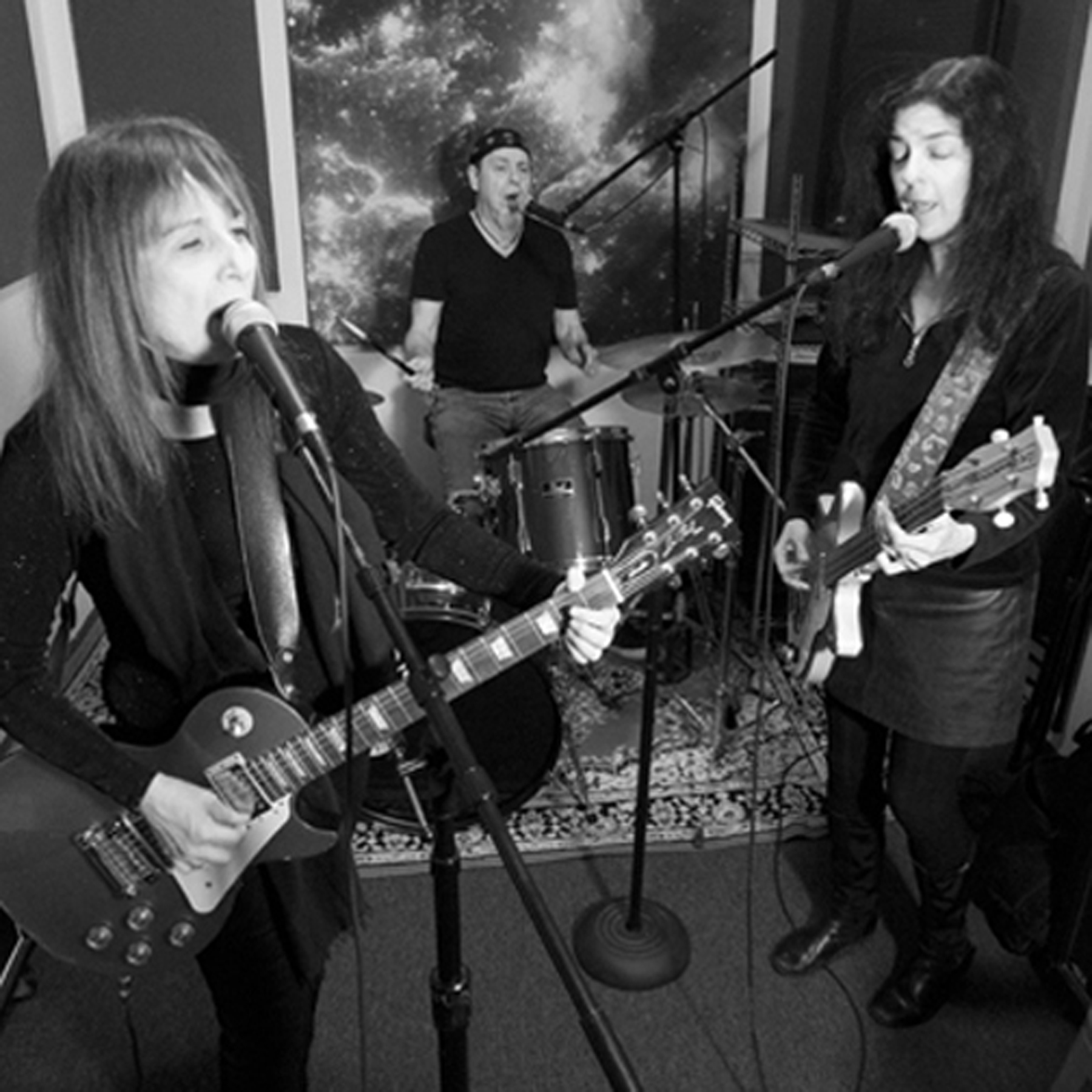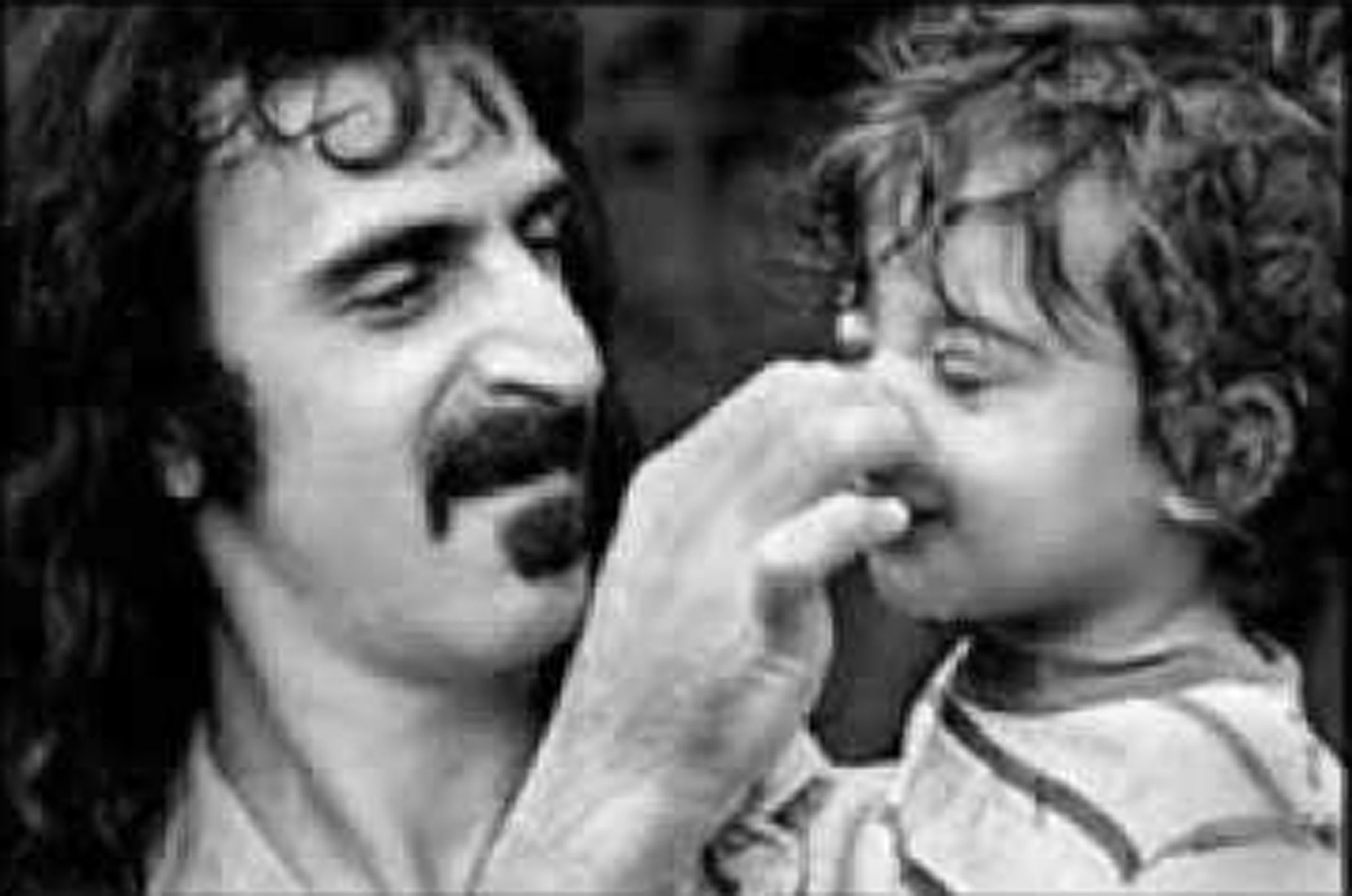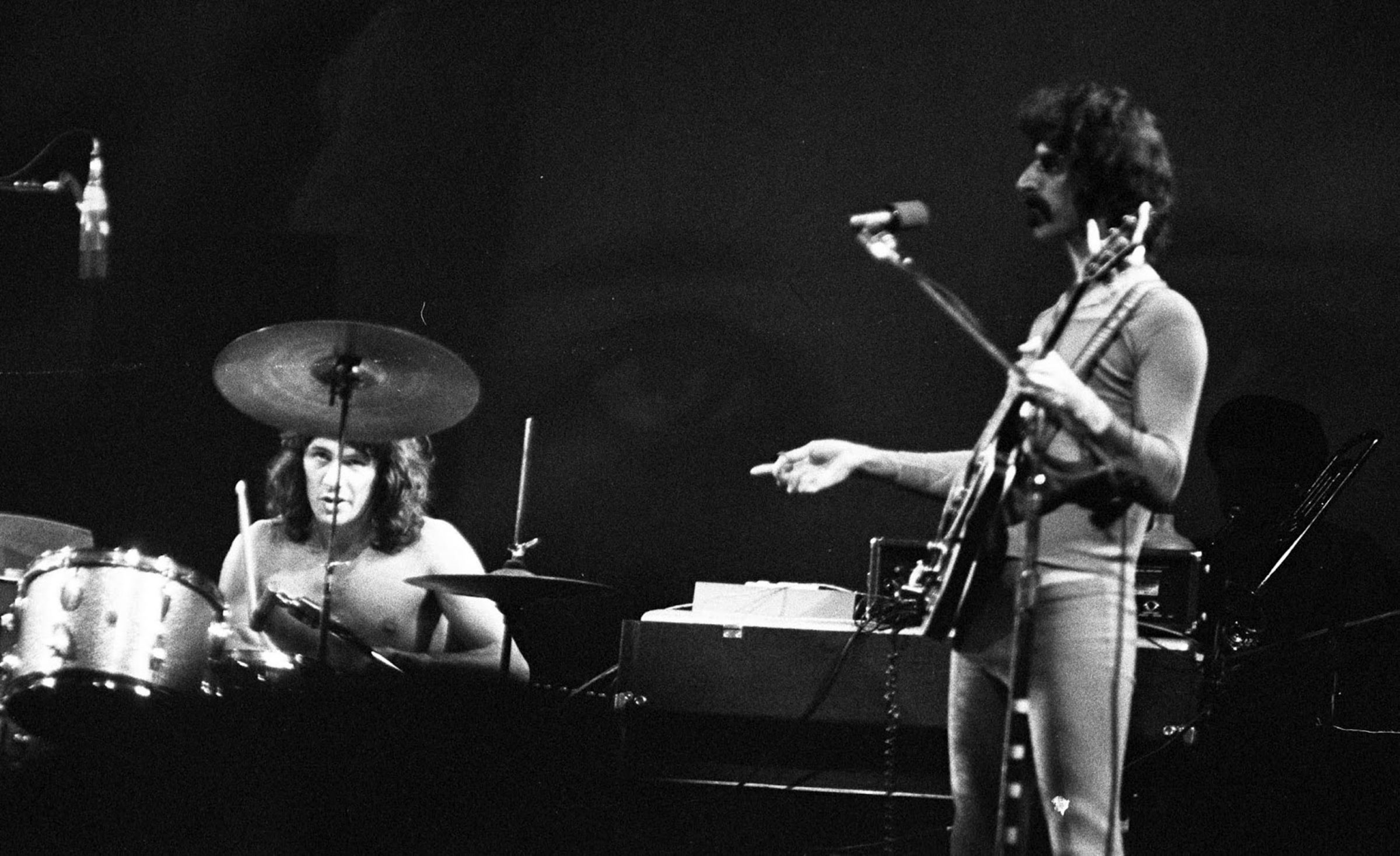(BLACKBERRY WAY RECORDS; 2022)

You may not know this, but Fingerprints were a big deal… a VERY big deal. The Minneapolis five-piece formed in the mid-1970s and, after a few line-up changes, emerged as one of the first three bands signed by the soon-to-be heavily influential Twin/Tone Records (original home to such punk and post-punk bands as the Replacements, Pere Ubu, Babes In Toyland, the Jayhawks, Soul Asylum and the Mekons). Fingerprints released three seven inch records (FINGERPRINTS, DOWN and SMILES FOR SALE) between 1978 and 1979 and appeared on the legendary BIG HITS OF MID-AMERICA, VOLUME 3 compilation album. Between April, 1978’s DOWN and September’s SMILES FOR SALE, guitarist Robb Henry exited the band. His replacement, Jeff Waryan and the rest of the group – Mark Throne (vocals and saxophone), Steve Fjelstad (bass), Kevin Glynn (drums) and Mike Owens (guitar and vocals) entered Blackberry Way Studios (founded by members Owens, Glynn and Fjelstad) to record their debut full-length in 1979. The album was nearly completed when the band broke up and the project shelved. Now, more than forty years later, Owens and Blackberry Way Records have gussied up 24 tracks – including most of the tunes from the original Twin/Tone releases – and given us WHERE THE BEAT GOES ON, featuring both recorded versions of the band. To say that this collection is anything less than essential is like saying that Prince was an “okay” guitar player.

“Don’t Wanna Talk” kicks things off in a very ‘80s lo-fi Minneapolis Rock and Roll fashion. Fjelstad’s rumbling bass and Glynn’s unexpected and decidedly heavy drum sound underpins a simple but incredibly catchy guitar part that leads to some very nice interplay between Owens, Waryan and Throne’s sax. And, so, we’re off to a great start. Next up is one of seven tracks to feature Robb Henry, “(Now I Wanna Be a) Space Girl,” the lead track to the first Fingerprints 7” record released on Twin/Tone. It’s really hard to describe the beauty of the song without making a couple of oxymoronic observations: First, there’s a very non-guitary guitar running throughout; second, the sound is very post-punk before punk was pre-anything else; finally, the guys were in and out in an economically Ramones-tight fashion (less than three minutes). “Prisoners” features some nice backing vocals to bolster the enigmatic vocals of songwriter Mike Owens and a little piano-noodling from guest Harvey Ginsberg. There’s an actual guitar solo (and a right tasty one it is, too) which I’m going to attribute to Jeff Waryan, although Owens could more than hold his own in that department. The overall sound of this one is a bit of envelope pushing, ala the Replacements or Husker Du. “Boogada Bigadus (Big Reggie’s Theme)” is a little slice of meaningless surf music that is absolutely fraught with meaning. The instrumental again offers some wicked guitar and a Throne sax part that fades in and out of the mix and, all of this in a mere 2:10! Link Wray or Dick Dale woulda been proud… heck, maybe they were! The title track to the group’s final Twin/Tone 7”, “Smiles For Sale” features a more out-front screaming sax along with another cool guitar riff that punctuates one of the weirdest vocal performances ever (from Mark Throne or any other presumably human entity). At this point, everything is starting to take on a certain random simplicity and odd sameness in its brilliance… just like most of the great punk records of the era. Owens adds piano to his instrumental repertoire to the next track, as a simple, jangly guitar riff and massive drums punctuate “Illusions of Love,” a bizarre little ditty that forms an odd one-two punch with the like-minded “A Place In My Heart.” This one’s an oddly sentimental song that could be about jealousy, murder, an unhealthy obsession or a late night booty call… maybe all of the above. Throne’s vocals take on an eerie, otherworldly quality that is not unappealing. “Kind Affection,” featuring a cool Jeff Waryan vocal (he also wrote the thing) is one of the catchiest tunes in the first third of this collection and another in a series of the band’s odd take on love and its many shades. Once again, there are some great guitar parts that caress the listener’s ears while Kevin Glynn’s drumming threatens the sanctity of said listener’s eardrums. What’s more Rock and Roll than that, right?

All manic drums, frenzied guitars and unhinged vocals (plus Mark making an appearance on the piano), “Uptown” might be a retelling of a secret liaison, a secret life or a tragic death. This band seems to have excelled at open-ended, ambiguous lyrical narratives. I like that! They were also good at delivering a memorable riff, a simple but effective backbeat, completely upbeat melody and vocal delivery for a rather maudlin subject. Such is the case with “Down,” an absolutely hummable tune that bores into your earholes and takes up residence in that little corner of your brain that – for better or worse – continually hits replay on the last catchy tune you heard. This one first made an appearance on the Twin/Tone double album BIG HITS OF MID-AMERICA, VOLUME 3. “Whose Side Are You On” offers a jackhammer guitar and drum sound, more great interplay between guitar and sax, a rumbling bass and an actual solo from Waryan, who wrote and sings the piece . Even a seemingly pedestrian song like “Hey Johnny” has something unique and unexpected to offer. In this case, more inventive six-string work (thanks to Mike Owens and Robb Henry) with an actual dual lead part that turns into a trio with the addition of Throne’s sax mimicking the twin guitars. Apparently giving the creators of SEINFELD the seed of an idea, “Nothing To Say” has a great riff, a great melody, and minimal lyrics (which fit the title perfectly). Just for kicks, Mike adds some organ to the mix. And all in a concise little package at just over 1:20. This song about nothing was originally released on SMILES FOR SALE. “Shake ‘n’ Roll” may be the truest punk song of the collection, with a snotty guitar solo courtesy of Owens and an indiscriminate use of the splash cymbal. Simply stated, it is pure fun for pure punks. A meaty psuedo-metal guitar intro leads into a moody “Young Love,” the oldest track here, predating Robb Henry’s coming. With another dose of ambiguity, the track could be about a stalker or a child molester or… Donny Osmond. Whatever the subject matter, the tune is creepy beyond belief! Mark Throne’s vocals sound particularly sinister over the grinding rhythm guitar (by Throne himself), Owens’ wah-wah laced leads and monstrous drums. It’s one of the longest tracks here, clocking in at nearly three-and-a-half minutes. A kind of Middle Eastern vibe is elicited from guest sax players Lynn Seacord and Peter Napoleon Barbeau and the tablas of Gary Waryan on “We Can’t Get In.” That rumbling bass and those forceful drums propel the swirling, mid-tempo number along at a Speed Metal pace. Dichotomous? Indeed. But, then, that’s what these Fingerprints were so good at!

A circular rhythm and repeating guitar lines drive “You Have To Push Them Over,” an instrumental from SMILES FOR SALE. There’s a lot going on here, with a slide guitar diving in before a nifty piano solo (compliments of the returning Harvey Ginsberg); a great kind of frantic guitar solo from Mike makes an appearance, joined by the return of the piano and the saxes of Barbeau and Seacord throwing down a few forceful notes just before the number ends. Robb Henry is back again for “Wasted On You.” This one has sort of an early U2 vibe with a very un-Edge like solo. All-in-all, it sounds very ominous… in the best possible way – I mean, “I was waiting for the world to die.” How much more ominous can you get? Mike Kearney adds some atmospheric sax, as well. “Must Be Me” has a nice, pedestrian chuga-chuga guitar riff that’s double timed by a steady, racing bass groove and imaginative lead guitar and another solid solo from Owens. Waryan’s vocals are nice and gritty and, all the while, Ginsberg’s piano hammers away just below the surface What a great little dose of power pop! Speaking of which, “Burn Those Bridges” is a very Who-sian piece in both depth and scope, with Townshendesque guitars (by Owens and Henry) and a lyrical bent to match. This is a solid effort from all involved, if a little weak on the backing vocals. Glynn’s drumwork on “Will You Be the One” features some absolutely massive fills (in fact, the drum parts are almost all heavy, muscular fills!). It’s one of the few songs to feature a sustained Mark Throne sax solo, who also delivers what may be is best vocal performance here, evoking Bowie. And, I shouldn’t have to mention it this far into a review, but the guitars are once again absolutely fantastic! “Made In the Shade” pumps the brakes, slowing down the tempo, which makes the Bowie comparison even more evident. Steve and Kevin find a nice pocket that allows the guitars (Robb and Mike, finishing off this set together), keys and voice to shine on what is a really nice tune. There’s an oddly pleasing little sax part that comes out of the woodwork toward the end of the four minute plus (!) track from the band’s debut EP. Next is “Back On the Street,” another four minute rocker. While I like the shorter, punkier stuff, I find myself wondering where those songs could have gone if they would have been fleshed out and extended like these two. This one offers a cool riff and a couple of really great guitar solos, the last one being somewhat diminished… lost in an overly long fade. The final track, “Half Past Zero,” almost seems like an afterthought or a simple work in progress. Another possibility is that it’s a demo that never really sparked anything creatively past the repeating riff. I know the guys have been playing around a bit lately and I certainly wouldn’t mind hearing a more fleshed-out version with vocals and solos and such.

So, there you have it… what is, I believe, the entire recorded output of one of the most influential bands that you’ve never heard of. Fingerprints were there at the cusp of that great Minneapolis Rock scene of the early ‘80s but, unfortunately, didn’t stick around to grab some of the spotlight that shone so brightly on other groups like the Replacements, Soul Asylum or Husker Du. Ah, what could have been! WHERE THE BEAT GOES ON is available on CD and digitally here or at your favorite music dispensary.



